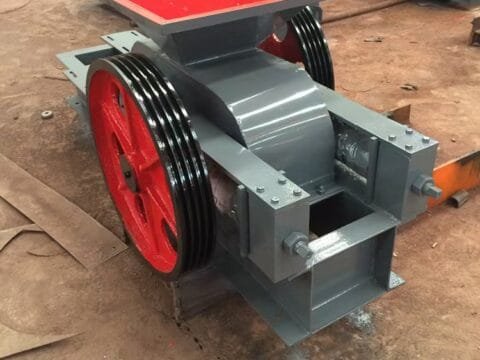
When the global annual generation of 2.1 billion tons of municipal solid waste data collided with the reality of the scarcity of land resources, the traditional landfill disposal model is facing unprecedented challenges. In this wave of urban metabolism system innovation, waste crushing equipment as the core equipment for solid waste pretreatment, is rewriting the rules of waste treatment with the role of “mechanical digestion system”. From building rubble to used home appliances, from medical waste to garden waste, these steel crushing units are being constructed through technological innovation, opening up new possibilities for the circular economy.
1, the ecological value of crushing equipment reconstruction
In the golden process of solid waste treatment, the crushing process bears the volume reduction, composition homogenization, sorting and efficiency triple mission. Research by the German Environment Agency shows that after professional crushing of waste packages, the calorific value of incineration can be increased by 18%-25%, and the landfill volume reduction rate is up to 75%. The actual case of a domestic renewable resources industrial park confirms that the production line configured with a double-axis shear crusher makes the purity of metal recycling jump from 68% to 92%, and the efficiency of plastics sorting increase by 40%.
The introduction of intelligent control system makes the crushing equipment break through the traditional limitations. Through the combination of laser sensing and AI algorithms, the equipment recognizes parameters such as material hardness and moisture content in real time, and automatically adjusts the rotational speed and tool clearance. This dynamic adaptability stabilizes the crushing rate of mixed garbage at more than 95% and reduces energy consumption by 30% compared with traditional equipment.

2、Three dimensions of core technology breakthrough
Dual-axis shear crushing technology Adopting staggered alloy knives, it realizes the dual role of “tearing + squeezing” in the slow shear speed of 30-60 rpm. It is especially suitable for waste tires, large furniture and other tough materials, and the fragment size can be precisely controlled in the range of 50-150mm. The test data of an environmental protection equipment enterprise shows that the separation of metal and non-metal is 89% when dealing with refrigerator shell.
Intelligent monitoring and protection system The early warning network constructed by vibration sensors and thermal imagers can predict the risk of overheating of bearings or tool wear 15 minutes in advance. *After applying this technology to a waste transfer station* that handles 800 tons of waste per day, equipment downtime has been reduced by 70%, and annual maintenance costs have been cut by RMB 420,000 yuan.
Modular Design Revolution The newly developed quick tool change system reduces tool change time from 6 hours to 45 minutes. Replaceable crushing chamber design allows the same host to freely switch between construction waste mode and organic waste mode, increasing the equipment utilization rate by 2.3 times.
3、Multiple fission of application scenarios
In the municipal waste treatment chain, crushing equipment is deeply coupled with biodegradation technology. After fine crushing of food waste, the gas production efficiency in the anaerobic fermentation tank is increased by 60%, and the residue is easier to make organic fertilizer.
In the field of industrial waste disposal, special crushing unit shows amazing potential. After an automobile dismantling enterprise adopts hydraulic jaw crusher, the annual treatment of end-of-life automobiles by a single equipment reaches 12,000, and the recovery rate of precious metals is increased to 97.8%.

In response to the plight of bulky waste disposal, mobile crushing plants are becoming the standard in cities. These movable equipment equipped with diesel generator sets can complete the crushing and reduction of sofas, mattresses and other materials at the community site, reducing transportation costs by 80%.
4, the triple trend of technological evolution
Energy self-sufficiency breakthrough New crushing equipment began to integrate waste heat recovery devices, the bearing friction heat into electrical energy storage. Experimental data show that equipment running continuously for 8 hours can recover 12-15kW-h of electricity, meeting 20% of its own energy demand.
Material Science Innovation The application of nano-tungsten carbide coating extends tool life to 3,000 working hours. A manufacturer’s test showed that when processing construction waste containing quartz sand, the tool wear rate dropped by 57%, and the processing capacity of single maintenance exceeded 15,000 tons.
Digital Twin Empowerment By building a digital mirror of the equipment, engineers can remotely simulate the crushing effect of different materials. *With the help of this technology, an equipment manufacturer* compressed its new product development cycle from 18 months to 9 months, and increased the debugging accuracy rate to 92%.
In this battle for green transformation, waste crushing equipment has gone beyond the scope of mere machinery to become a key hub connecting waste management and resource regeneration. From the micro-improvement of the blade alloy to the macro-reconstruction of the processing system, every technological breakthrough is reshaping the way humans get along with waste. When the roar of the crusher resonates with the pulse of the city, what we are witnessing is not only the transformation of solid waste, but also the evolution of the entire ecological civilization.



